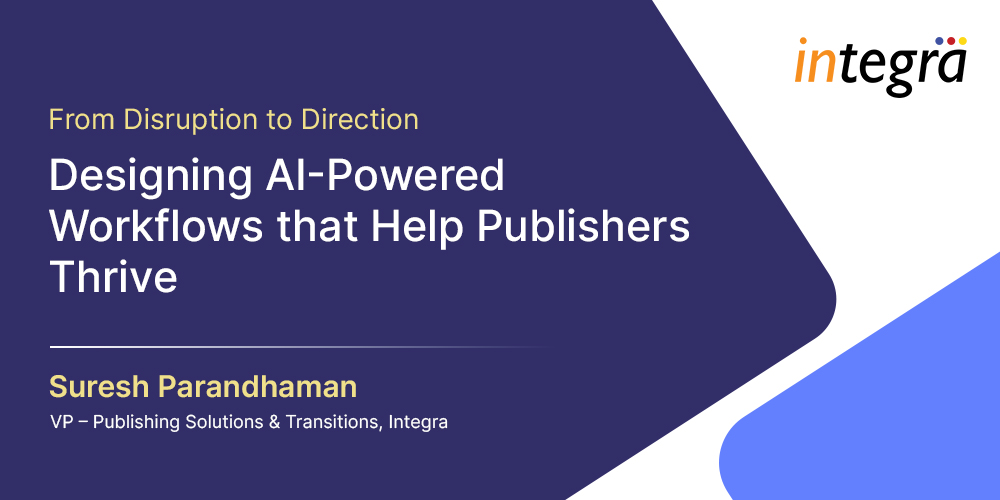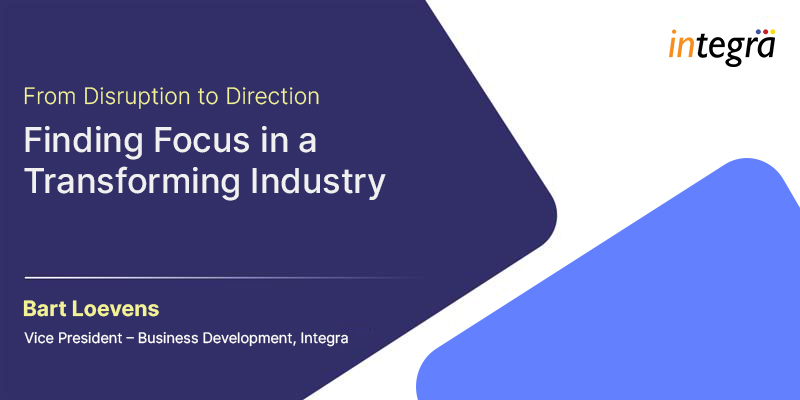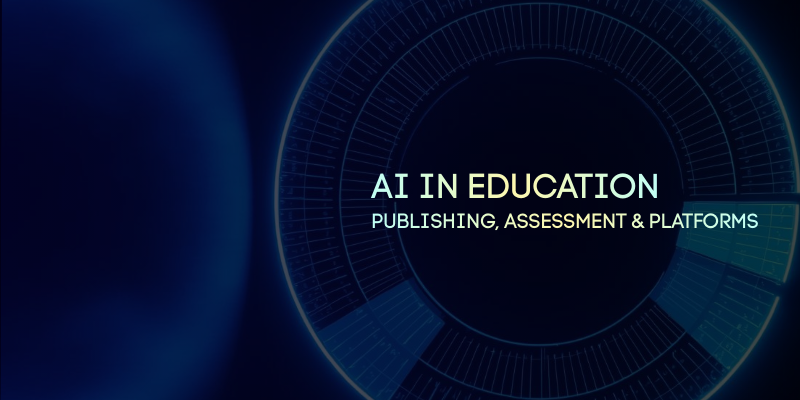From Disruption to Direction: Designing AI-Powered Workflows that Help Publishers Thrive

Over the last two decades, I’ve seen scholarly publishing weather many changes—digital transformation, open access, globalisation of research, and now the rapid rise of AI.
Each wave of change has brought its own disruptions, but also opportunities to rethink how we serve authors, reviewers, editors, and readers.
Today, I see our industry at a turning point again. Deadlines are tighter, budgets leaner, author expectations higher, and technology more powerful than ever. The question is no longer whether to embrace change—it’s how to channel it into workflows that are faster, smarter, and more human-centred.
The Challenges Shaping Scholarly Publishing Right Now
If you ask publishing leaders what keeps them awake at night, you’ll hear a mix of recurring and new concerns:
- Pressure to shorten submission-to-publication times without compromising quality.
- Research integrity demands—from image forensics to plagiarism checks—that add complexity to editorial workflows.
- Open access and evolving business models that shift cost structures and funding dynamics.
- Reviewer fatigue and the difficulty of matching manuscripts to qualified experts quickly.
- Global competition for high-quality submissions and the need to provide a better author experience.
- AI adoption fears—how to leverage automation responsibly without losing the human judgement that underpins trust.
For me, these challenges aren’t abstract—they surface in every transition project, every workflow mapping exercise, every client conversation. And the reality is that meeting them requires both efficiency and empathy.
Why Listening Comes First
When a publisher partners with Integra, we don’t arrive with a ready-made fix. We start by listening—understanding not just what a publisher needs, but why.
Is the main concern speed? Author satisfaction? Scalability? Integration with existing systems?
Only then do we design a workflow solution that truly fits.
Sometimes this means introducing AI-driven checks early in the process. Sometimes it means re-engineering peer review communication. Other times, it’s about redesigning the entire editorial office model to flex with submission volume.
Leading with AI, Grounded in Publishing Expertise
One of the most exciting shifts I’ve witnessed is how AI is finally moving from hype to practical application in scholarly publishing. At Integra, we’ve been intentional about developing AI tools that solve real problems—tools that assist, not replace.
- EditorialPilot
Performs manuscript triage in minutes, not days—checking for scope fit, completeness, and formatting before a manuscript even reaches an editor’s desk. This reduces unnecessary peer review cycles and ensures reviewers get only the manuscripts that are ready for them. - LangEditPilot
Offers AI-powered language editing that preserves the author’s voice. For many researchers—especially those for whom English is not the first language—maintaining tone, nuance, and intent is as important as fixing grammar. LangPilot improves clarity while respecting style.
These tools are not standalone. They plug directly into a publisher’s workflow, meaning you can gain speed and consistency without tearing out existing systems. The result? Turnaround times shrink, editorial workload drops, and quality remains intact.
From Submission to Publication—Smarter, Faster, Better
Our AI-enhanced workflows are helping publishers:
- Automate repetitive quality checks (plagiarism, metadata accuracy, reference formatting).
- Streamline reviewer selection and correspondence.
- Gain real-time visibility into manuscript status, so bottlenecks can be addressed immediately.
- Support editorial teams with scalable models that flex with submission spikes.
In one recent transition, we helped a mid-sized society publisher cut their average submission-to-acceptance time by 25%—not by working longer hours, but by redesigning and automating early-stage tasks.
Transitions: Where Partnerships Are Forged
I often say that the “transition phase” is the moment where a working relationship becomes a partnership.
It’s not just about handing over work—it’s about building trust through:
- Clear, open communication channels.
- Robust documentation and training.
- Shared performance metrics.
- Early, visible wins.
When these elements are in place, publishers feel supported, not disrupted—and change starts to feel less like a leap and more like a well-planned step forward.
What This Journey Has Taught Me
If I distill my experience into a few truths, they’d be:
- AI is a partner, not a replacement. The best outcomes come when technology amplifies human expertise.
- Workflow change must earn its keep. Efficiency gains need to be measurable and meaningful.
- Transitions are cultural as well as operational. Success comes from shared ownership, not just process adoption.
- Speed matters—but so does trust. Authors and reviewers remember how a process felt, not just how fast it was.
The Road Ahead
The publishing landscape will only grow more complex. Open access mandates will evolve, AI will keep advancing, and authors will continue to expect more speed and transparency.
My commitment—as someone who lives at the intersection of publishing operations and transformation—is to help our partners direct disruption into progress.
With the right combination of human expertise and intelligent technology, I believe we can build workflows that are not only faster and more efficient, but also more sustainable, inclusive, and rewarding for everyone involved.
In the end, that’s what this industry is about: not just publishing faster, but publishing better.
About the Author
Suresh Parandhaman is Vice President – Publishing Solutions & Transitions at Integra. He works closely with global journal publishers to design high-quality, efficient, and scalable workflows, and to manage smooth transitions that lay the foundation for lasting partnerships.
Recent Blogs

Preprints, Transparency, and the Future of Scholarly Publishing: Why Journals Should Lead the Shift

From Disruption to Direction: Finding Focus in a Transforming Industry


